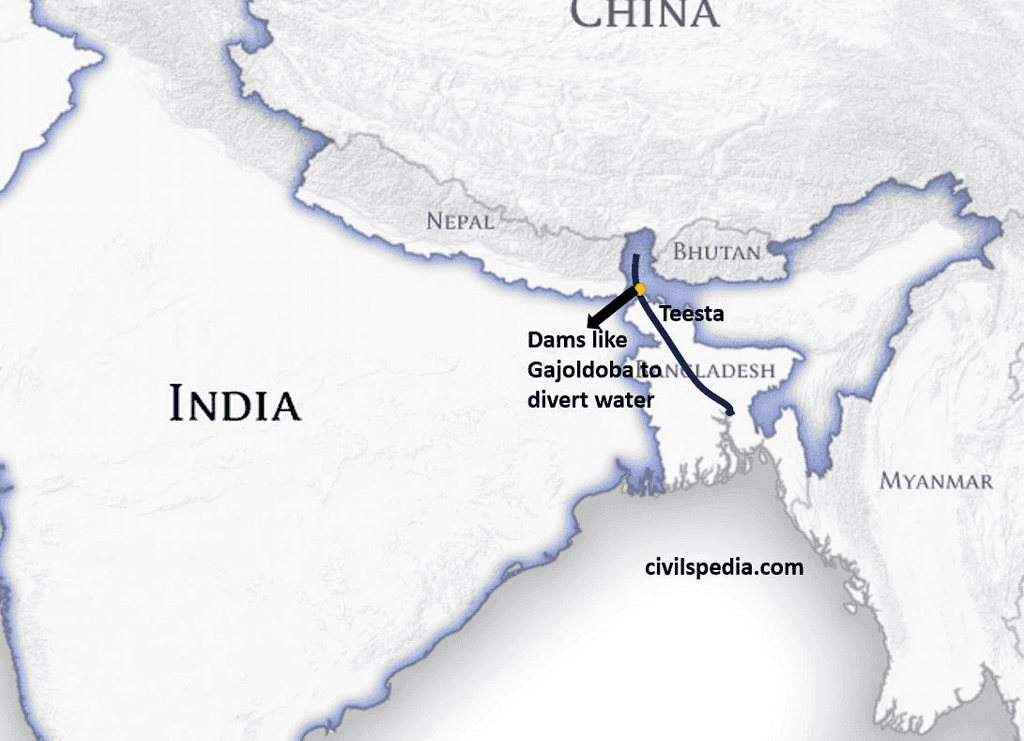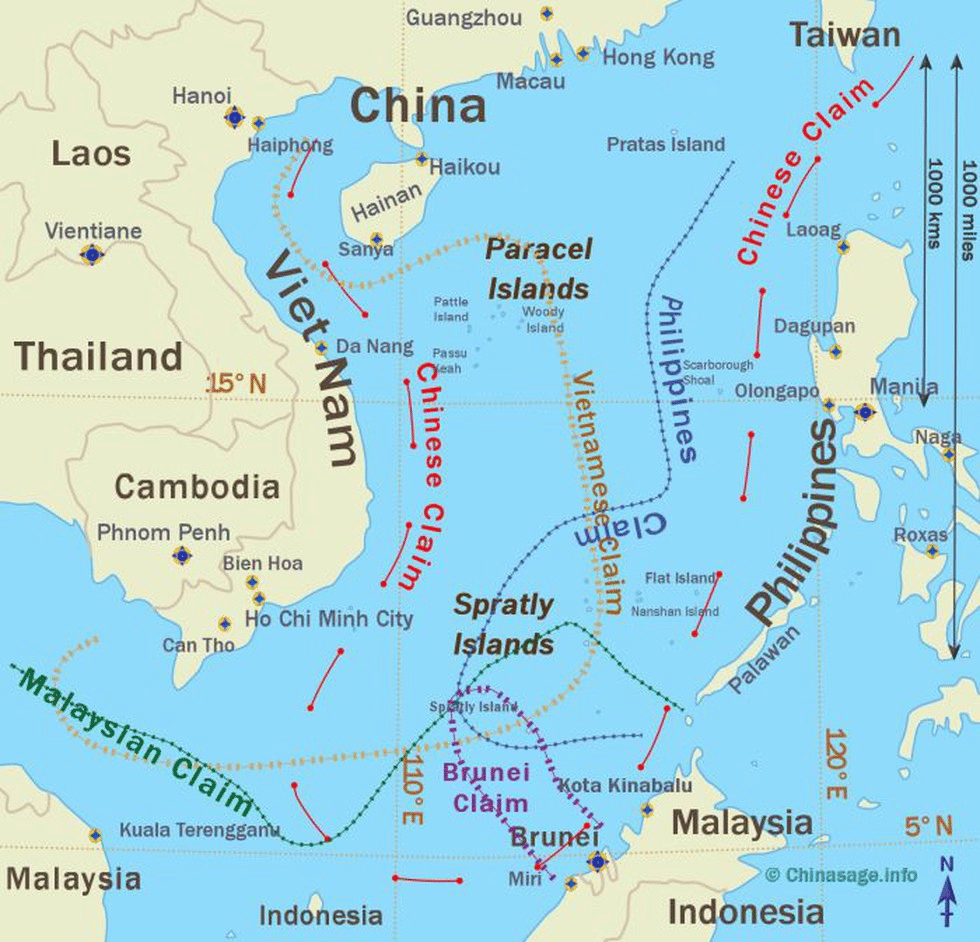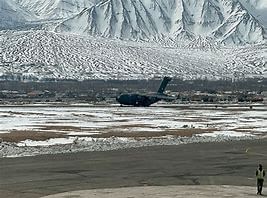UPSC Daily Current Affairs - 30th June 2024 | Current Affairs & Hindu Analysis: Daily, Weekly & Monthly PDF Download
GS2/Science and Technology
What was the Tussle over Covaxin IPR?
Source: The Hindu

Why in News?
Bharat Biotech International Limited (BBIL), the company that created the Indian coronavirus vaccine, has admitted to making an unintended mistake in its patent filings. These filings are meant to protect the vaccine's Intellectual Property Rights (IPR).
- Despite being one of India's top biotechnology companies, BBIL forgot to list the scientists from the Indian Council of Medical Research (ICMR) as co-inventors in the patent documents for Covaxin.
What are Patents and IPR?
- A patent represents a powerful Intellectual Property Right (IPR), and is an exclusive monopoly granted by a Government to an inventor for a limited, pre-specified time.
- It provides an enforceable legal right to prevent others from copying the invention.
Patents can be of two types:
- product patent: ensures that the rights to the final product is protected, and anyone other than the patent holder can be restrained from manufacturing it during a specified period.
- process patent: enables any person other than the patent holder to manufacture the patented product by modifying certain processes in the manufacturing exercise.
Initially, India adopted process patenting in 1970s which enabled India to become a significant producer of generic drugs at global scale.
However, due to the obligations under the TRIPS (Trade-Related Aspects of Intellectual Property Rights) Agreement, product patenting is also allowed in India.
TRIPS is an international legal agreement between all the member nations of the World Trade Organization.
Controversy Surrounding the Covaxin IPR:
- Explained that they patented the process of making vaccines from virus strains provided by the ICMR-NIV (National Institute of Virology).
- The ICMR-NIV specializes in extracting viruses from blood samples, identifying their characteristics, conducting tests to measure their infectiousness, and comparing them to related strains.
- However, turning this research into a vaccine on an industrial scale requires facilities that only established vaccine manufacturers have.
- The vaccine developed by BBIL, is an inactivated version of the coronavirus that causes COVID-19. When injected, it stimulates the body to produce antibodies that may protect against severe illness from the virus.
- To enhance its effectiveness, an 'adjuvant' is added to the vaccine.
- Vaccine manufacturers have their own methods for combining these steps, and because the field is highly competitive, they try to prevent others from copying their processes to maintain a temporary monopoly and earn profits.
- It's important to note that while companies can apply for product or process patents in as many countries as they can afford, a patent is only granted after regulatory authorities are convinced that the process is indeed novel or inventive.
- As far as publicly known, Bharat Biotech has not yet been granted these patents.
What were the Roles of BBIL and ICMR?
- BBIL collaborated with ICMR-NIV on every step of developing the Covaxin vaccine. They signed an agreement outlining each organization's responsibilities.
- Due to ICMR being a public entity and the scale of the COVID crisis, there were requests to make this agreement public under the Right to Information Act.
Portions of the agreement were revealed in the Rajya Sabha in July 2021.
- The agreement specified that beyond providing the virus strains and making the vaccines, ICMR would also test the vaccines on animals—from rodents to monkeys—and then on humans to ensure the vaccine's efficacy.
- ICMR funded these clinical trials with ₹35 crore and incurred costs in developing Covaxin. In return, ICMR was to receive 5% of the royalties BBIL earned from the sale of Covaxin.
Since the collaboration was announced, it was generally understood that both entities would share the intellectual property rights.
Initially, BBIL said that there was a distinction between the rights to make the vaccine and the rights to the data from clinical trials.
They stated that because ICMR had not invested in the actual production of the vaccine, it was not included in the patent applications.
Following public scrutiny, BBIL admitted to an error and announced plans to file new applications listing ICMR personnel as co-inventors.
Conclusion:
Companies often enter into multiple licensing agreements, as BBIL did with Virovax for an adjuvant. When multiple entities collaborate on a single product, being listed as an inventor affects the sharing of IPR, royalties, and product usage. Disputes over IPR are common across all fields. In patent filings, especially in the U.S., not listing all inventors can result in patent application rejections.
GS3/Economy
30 districts to be recognised for containing drug abuse among school children
Source: The Hindu

Why in news?
The National Commission for Protection of Child Rights (NCPCR) will honor 30 top-performing districts for successfully implementing a Joint Action Plan to curb substance abuse among school children. The awards will be presented on June 30 by Minister of State for Home Nityanand Rai. The event coincides with a national review and consultation organized by NCPCR and the Narcotics Control Bureau (NCB) on preventing drug and substance abuse and illicit trafficking.
Fight against drug menace - India's regulatory framework
About
- The NCPCR is a statutory body established in 2007 under the Commission for Protection of Child Rights Act, 2005.
- Its primary objective is to ensure the protection of child rights as enshrined in the Indian Constitution and various international conventions.
- The NCPCR's mandate is to monitor and promote the rights of children, defined as individuals below the age of 18 years, and ensure their well-being in all aspects of their lives.
- The Commission envisages a rights-based perspective, which flows into national policies and programs.
Some of the notable Works of NCPCR
- Elimination of Corporal Punishment
- Protection of Children from Sexual Offences (POCSO) Act
- Child Labour
- Education
- Juvenile Justice
- Combating Substance Abuse
- Child Trafficking
- COVID-19 Response
About NCB
- NCB is the apex drug law enforcement and intelligence agency of India, established in 1986 under the Narcotic Drugs and Psychotropic Substances Act (NDPS Act), 1985.
- The NCB is responsible for combating drug trafficking and the abuse of illegal substances.
Nodal ministry
- The NCB operates under the Ministry of Home Affairs, Government of India.
Article 47 of the Indian Constitution
- The National Policy on Narcotic Drugs and Psychotropic Substances is based on the Directive Principles, contained in Article 47 of the Indian Constitution.
- The Article directs the State to endeavor to bring about prohibition of the consumption, except for medicinal purposes, of intoxicating drugs injurious to health.
Existing Laws
- Drugs and Cosmetics Act, 1940
- The Narcotic Drugs and Psychotropic Substances Act, 1985
- The Prevention of Illicit Traffic in Narcotic Drugs and Psychotropic Substances Act, 1988
About Joint Action Plan (JAP)
- JAP was developed by the NCPCR and the NCB based on deliberations with the concerned Ministries in 2021.
- It streamlines efforts made by different agencies to bring paradigm shifts in prevention.
'Prahari' (sentry) portal to be launched
- During the event, a new portal called 'Prahari' (sentry) to be launched.
- The portal aims to conduct quarterly awareness activities on drugs and substance abuse in schools. These activities will be organized by children and teachers nominated by special 'Prahari' clubs.
GS2/Polity
Why has the NTA Failed to Deliver?
Source: The Hindu

Why in News?
With widespread allegations of cheating, paper leaks and other irregularities impacting flagship examinations such as the NEET (National Eligibility cum Entrance Test), the National Testing Agency (NTA) has come under intense fire.
The National Testing Agency (NTA)
Issues Faced by the NTA
- Conduct computer-based tests only: To process high volume in a short time, the NTA engages third-party technical partners due to the NIC's lack of capacity.
- Agency is severely understaffed: Initially set up with about 25 permanent staff positions, functions outsourced to technical partners, leading to issues.
- Absence of robust security mechanisms: Critical for handling pen-and-paper exams, including question paper setting, encryption, printing, and distribution.
- NEET and UGC-NET exams irregularities: Criticisms arose over grace marks, leaked question papers, and breaches in exam integrity, necessitating reforms.
What Needs to be Done to Reform India's Examination Process?
- Adding manpower and infrastructure to the NTA: To enable smoother conduct of exams, especially pen-and-paper versions for rural students.
- Dismantling the centralization process: Advocating for more decentralized structures to cater to varied institutional needs effectively.
- More radical reform of the assessment system: Suggests periodic assessments, concept-based understanding, and aptitude evaluations for better education quality.
GS2/International Relations
Understanding the Delay in the Teesta Water Sharing Treaty
Source: Indian Express

Why in news?
During the recent state visit of Bangladeshi Prime Minister Sheikh Hasina to India, PM Modi announced that a technical team would soon visit Bangladesh to discuss the conservation and management of the Teesta River. This remark has reignited speculation about the long-pending Teesta water sharing treaty, a crucial bilateral agreement that has remained unresolved for over a decade.
Teesta Water Sharing Proposal
About
It is a tributary of the Jamuna River (Brahmaputra River) and it flows through India and Bangladesh.
Origin and course
- Teesta river originates from the Tso Lhamo Lake at an elevation of about 5,280 metres in north Sikkim.
- After that, it flows to the south, cutting a deep gorge through the Siwalik Hills east of Darjiling (in West Bengal, India), and turns southeast to run through the Sivok Khola pass onto the plains of West Bengal.
Countries
- India: Sikkim and West Bengal
- Bangladesh: The river enters Bangladesh in the Rangpur Division, eventually merging with the Brahmaputra River.
The major tributaries of Teesta River
- Left-bank Tributaries: Lachung Chhu, Chakung Chhu, Dik Chhu, Rani Khola, Rangpo Chhu.
- Right-bank Tributaries: Zemu Chhu, Rangyong Chhu, Rangit River.
Significance for India and Bangladesh
- Teesta is Bangladesh's fourth largest trans-boundary river and its floodplain covers an area of 2,750 square kilometres in Bangladesh.
- But 83% of the river's catchment area lies in India and the remaining 17% is in Bangladesh, supporting 8.5% of its population and 14% of its crop production.
2011 Proposal
Water Distribution
The draft agreement proposed an equitable distribution of the Teesta River's water between India and Bangladesh.
As per this agreement
- India was to receive 42.5% and Bangladesh 37.5% of the river's water flow during the lean season (December to March).
- The remaining water would be managed according to seasonal variations and mutual needs.
Collaborative Management
- The proposal included provisions for joint monitoring and management of the river's water.
Controversies Surrounding the Proposal
West Bengal's Opposition
The chief obstacle to the treaty's finalization has been opposition from the Indian state of West Bengal.
The state government expressed concerns
- That the proposed water sharing would adversely affect West Bengal's irrigation and drinking water needs.
- West Bengal's significant dependence on the Teesta River for its agriculture sector added to the reluctance to agree to the terms.
Regional Politics
- The issue has become deeply entangled in regional politics.
- The West Bengal government's refusal to endorse the agreement reflects broader political dynamics and sensitivities, where state interests are sometimes prioritized over national diplomatic commitments.
Environmental Concerns
- Environmentalists in both countries have raised concerns about the potential ecological impacts of altering the river's flow.
- The construction of dams and barrages as part of the management strategy could disrupt the river's ecosystem and negatively affect biodiversity.
Bangladesh's Dependence
Bangladesh heavily relies on the Teesta River, especially in the northern region, for agriculture and livelihood.
The country faces significant water shortages
- During the dry season, exacerbating the need for a fair and reliable water-sharing agreement.
- The perception that Bangladesh has historically received less than its fair share of water has fueled public sentiment and political pressure to secure a favorable deal.
Previous Agreements and Trust Deficit
Historical water-sharing disputes have led to a trust deficit between the two countries.
This complicates negotiations
- As past experiences influence the current dialogue and expectations.
China's interference
In 2020, China proposed major dredging work on the Teesta River and building reservoirs and embankments.
Why is Bengal talking about the Ganga treaty?
The Ganga water sharing treaty with Bangladesh completes 30 years in 2026 and a renewal of the agreement is on the cards.
The Ganga Treaty
- Ensures equitable water sharing of the Ganges River.
- Under the treaty, the water allocation during the dry season is specified.
GS-I/Geography
South China Sea
Source: Indian Express

Why in News?
India recently said it opposes unilateral actions seeking to change the status quo by force in South China Sea amid concerns over China’s escalatory moves against the Philippines’ maritime operations in the region.
About:
Location:
- The South China Sea is an arm of the western Pacific Ocean that borders the Southeast Asian mainland.
Size and Depth:
- It covers an area of about 1,423,000 square miles (3,685,000 square km).
- The mean depth is 3,976 feet (1,212 metres).
Boundaries:
- Countries: Bordered by China, Taiwan, Philippines, Malaysia, Indonesia, Brunei, and Vietnam.
- Southern Boundary: A rise in the seabed between Sumatra and Borneo.
- Northern Boundary: From the northernmost point of Taiwan to the coast of Fujian province, China, in the Taiwan Strait.
Connections:
- Taiwan Strait: Connects with the East China Sea.
- Luzon Strait: Connects with the Philippine Sea.
- The South China Sea and the East China Sea together form the China Sea.
Archipelagos:
- Paracel Islands: Controlled by China.
- Spratly Islands.
Climate:
- The weather is tropical and largely controlled by monsoons.
Significance:
- It is the second most used sea lane in the world.
- A significant trade route for crude oil from the Persian Gulf and Africa, passing through the Strait of Malacca to destinations like Singapore, Thailand, Hong Kong, Taiwan, South Korea, and Japan.
Major Ports:
- Hong Kong, Singapore, and Kaohsiung in southern Taiwan.
GS-III/Environment and Ecology
Pench Tiger Reserve
Source: The Week

Why in News?
The Pench Tiger Reserve recently launched an advanced Artificial Intelligence (AI) system for the early detection of forest fires.
Pench Tiger Reserve
Location:
- Located in the southern reaches of the Satpura hills.
- Spans the Seoni and Chhindwara districts in Madhya Pradesh and continues into the Nagpur district in Maharashtra as a separate sanctuary.
- Named after the Pench River, which flows from north to south through the reserve.
Components:
- Includes the Indira Priyadarshini Pench National Park, the Pench Mowgli Sanctuary, and a buffer zone.
- The area is the real-story setting of Rudyard Kipling's famous "The Jungle Book".
Terrain:
- Undulating with small hills and steep slopes on the sides.
Vegetation:
- Supports a mosaic of vegetation ranging from moist sheltered valleys to open, dry deciduous forests.
Flora:
- Diverse range including teak, saag, mahua, and various grasses and shrubs.
Fauna:
- Famous for large herds of Chital, Sambar, Nilgai, Gaur (Indian Bison), and wild boar.
- Key predator is the tiger, followed by the leopard, wild dogs, and wolf.
- Over 325 species of resident and migratory birds, including the Malabar Pied Hornbill, Indian Pitta, Osprey, Grey Headed Fishing Eagle, White Eyed Buzzard, etc.
GS-I/Geography
Shyok River
Source: The Hindu

Why in News?
Five soldiers died after a tank was swept away by strong water currents in the Shyok River during military training in Ladakh recently.
Shyok River
Location:
- Flows through northern Ladakh in Jammu and Kashmir, India, and enters the Pakistan-administered region of Gilgit-Baltistan, where it joins the Indus River.
Significance:
- It is a tributary of the Indus River.
Course:
- Origin: From the Rimo Glacier, one of the tongues of the Siachen Glacier.
- Name: Derived from a Ladakhi word meaning 'the river of death'.
- Flow Direction:
- Initially flows southeast from the Rimo Glacier.
- Upon reaching the Pangong range, it turns northwest, flowing parallel to its initial path.
- Geographical Features:
- Flows through a broad valley, rapidly entering a narrow gorge after Chalunka.
- Joins the Indus River at Skardu in Pakistan.
Length:
- Approximately 550 km (340 mi).
Source of Water:
- Fed by meltwater from numerous glaciers along its journey.
Topography:
- Meanders through high-altitude deserts and mountain ranges of Ladakh.
Tributaries:
- Main right-bank tributary is the Nubra River.
|
63 videos|5408 docs|1146 tests
|
FAQs on UPSC Daily Current Affairs - 30th June 2024 - Current Affairs & Hindu Analysis: Daily, Weekly & Monthly
| 1. What is the significance of recognizing 30 districts for containing drug abuse among school children? |  |
| 2. What are the reasons behind the failure of the NTA to deliver? |  |
| 3. Why is there a delay in the Teesta Water Sharing Treaty? |  |
| 4. What is the current situation in the South China Sea? |  |
| 5. What is the significance of the Pench Tiger Reserve in wildlife conservation? |  |
















